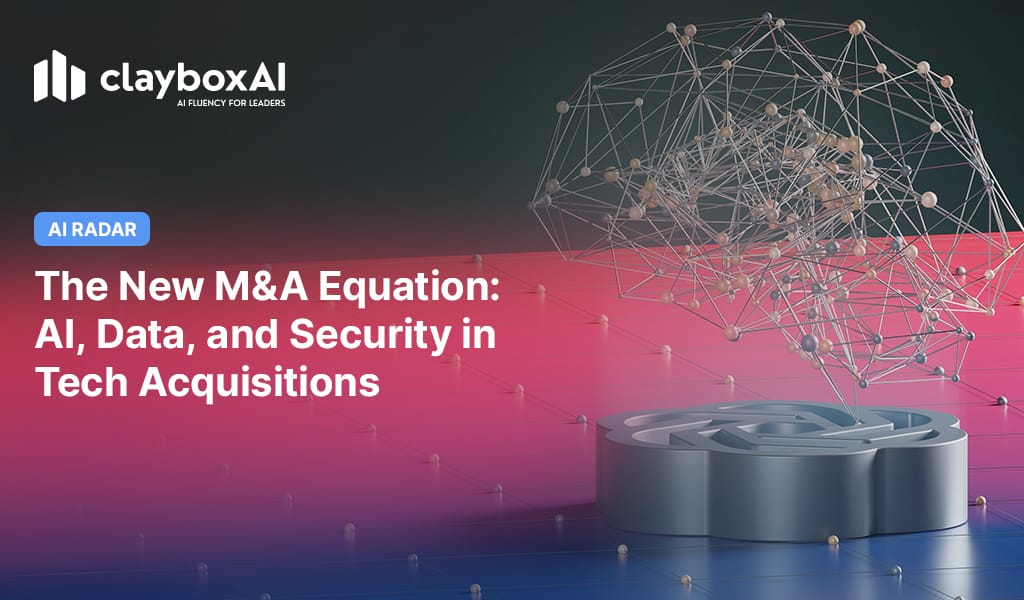Just weeks into 2025, the Consumer Electronics Show (CES) revealed an onslaught of AI-driven innovations – from Nvidia’s powerful RTX 50-series GPUs featuring AI-accelerated rendering to Halliday’s futuristic AR smart glasses. What was once a fringe technology is now the backbone of industry reinvention. As per MIT, 95% of organisations already employ AI in some form, with over half targeting full integration by 2026.
But as AI scales, the core question shifts: can the infrastructure keep pace with the intelligence?
The AI-Optimised Cloud: Strategic, Not Just Scalable
In 2025, cloud providers are no longer competing solely on compute power. The emphasis has moved towards intelligent, targeted expansion.
Microsoft, for example, is investing USD 300M in South Africa to build AI-ready data centres, moving beyond traditional markets. Similarly, AWS is channelling USD 8B into next-gen cloud infrastructure in Maharashtra, India — tapping into new demand in high-growth regions.
The AI push isn’t limited to hyperscalers. Oracle is charting an aggressive course, forecasting 15% cloud revenue growth in 2026 and 20% in 2027. Their success hinges on deep AI integration and semiconductor investments. As a key player in OpenAI and SoftBank’s Stargate AI project, Oracle is staking its future on AI-led innovation.
New challengers are also emerging. CoreWeave, a former crypto miner, has transformed into an AI cloud provider and landed a USD 12B, five-year contract with OpenAI to support model training and operations.
The message is clear: AI is redrawing the map of cloud infrastructure at an unprecedented pace.
AI Data Centres: The New Growth Engines
Enterprises are investing heavily in AI-optimised data centres to gain greater control, minimise latency, and reduce operational costs – while avoiding the limitations of legacy infrastructure.
Reliance Industries plans to build the world’s largest AI data centre in Jamnagar, India, with a 3-gigawatt capacity. This colossal project, powered by its ‘Jio Brain’ platform, aims to slash AI inferencing costs and support high-scale workloads. Meanwhile, in the U.S., a banking consortium has pledged USD 2 billion for a 100-acre AI data centre in Utah, signalling the financial industry’s long-term faith in AI.
These investments reflect a broader trend – AI infrastructure is becoming the backbone of digital economies. Advanced data centres are no longer optional; they’re essential to enabling national-scale AI ambitions and unlocking new productivity frontiers.
Next-Gen AI Hardware: Beyond GPUs
As cloud capacity surges, chipmakers are reinventing AI hardware from the inside out, prioritising performance and power efficiency.
Nvidia is working with enterprises directly to deploy H200-powered private AI clusters, going beyond its traditional cloud partnerships. AMD’s MI300X chips are gaining traction in financial services for their energy efficiency and speed in high-frequency trading and fraud detection.
Chiplet architectures – modular processors built from smaller interconnected chips – are also gaining steam. Meta’s custom accelerators and Google’s TPU designs are leading the charge in making AI more scalable and less power-hungry.
The focus has shifted from sheer chip size to smarter design. It’s not just about faster processing – it’s about doing more with less energy.
Collaborative Infrastructure: AI’s New Playbook
With soaring infrastructure costs, collaboration is emerging as the pragmatic path forward. Building and running large language models demands billions in high-performance chips, compute power, and data storage.
To manage this, companies are forming strategic alliances. SoftBank and OpenAI have created a joint venture in Japan to fast-track AI integration across industries. On a global scale, Telstra and Accenture are teaming up to co-develop AI infrastructure, ensuring access to scalable, enterprise-grade solutions.
In financial services, Palantir and TWG Global are deploying AI models for fraud detection and risk analytics through shared infrastructure – optimising costs and accelerating deployments.
With over USD 315B spent globally on AI infrastructure in 2025 – and OpenAI committing USD 500 billion more – collaboration is no longer optional. It’s a strategic necessity.
These alliances are less about sharing the load and more about ensuring no one gets left behind in the AI race.
Shifting the Power Centre of AI
The 2025 AI infrastructure boom isn’t just a tech story – it’s a reshuffling of global digital power. The entities building tomorrow’s AI systems are also shaping the rules, reach, and realities of the AI economy.
Cloud giants are defining where and how AI gets deployed. Semiconductor firms are driving sustainability and energy-conscious designs. Collaborative ventures point to the fact that AI is now too large and too expensive for any one entity to tackle alone.
But with this scale comes risk. Will smaller firms be priced out? Can regulatory frameworks keep up? As AI infrastructure becomes increasingly concentrated, the implications for innovation, access, and control grow more complex.
What remains undeniable: those who build and control today’s AI infrastructure are also shaping the blueprint for tomorrow’s AI-powered world.


